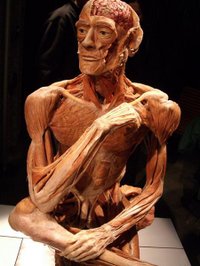The sticky issue in these cases is always the notion of "standing." Federal courts may only hear "cases" or "controversies" brought by parties with recognized justiciable interests. They cannot issue advisory opinions or rule on questions unless put forth by a party that suffered actual harm. To use the jargon, standing requires a showing of an invasion of a legally protected interest that is 1) concrete and particularized and 2) actual or imminent rather than conjectural or hypothetical. There must also be a 3) causal connection between the injury and the conduct complained of and 4) it must be likely, as opposed to merely speculative, that the injury will be redressed by a favorable decision.
She finds real harm done to specific persons, such as scholars, journalists and (bastards) attorneys, as the surveillance actually interfered with their work.
"Here, Plaintiffs are not asserting speculative allegations. Instead, the declarations asserted by Plaintiffs establish that they are suffering a present concrete injury in addition to a chill of their First Amendment rights. Plaintiffs would be able to continue using the telephone and email in the execution of their professional responsibilities if the Defendants were not undisputedly and admittedly conducting warrantless wiretaps of conversations."The problem with standing challenges, which will definitely be asserted on appeal, is that it is an easy way out for appellate panels that don't like the result but don't want to go on record in addressing the merits. Another way out comes from the nature of the ruling. This was a grant of summary judgment, a judgment on the pleadings before trial. Such an order involves a finding that there is no question of material fact, and the issue presented to the court is purely a question of law. Appeals courts can reverse that finding, by holding that there were factual issues that needed resolution, without speaking to the merits (and also embarrassing the district judge in so doing).
I honestly am not all that familiar with the 6th Circuit. Quite a few W appointees sit there, so panel makeup will be crucial (these cases are normally heard by a panel of three judges). However, she is certainly sending them a well-crafted district court opinion with no glaring holes.
And kudos to Judge Taylor for some great lines:
We must first note that the Office of the Chief Executive has itself been created, with its powers, by the Constitution. There are no hereditary Kings in America and no powers not created by the Constitution. So all “inherent powers” must derive from that Constitution.
Indeed, since Ex Parte Milligan, we have been taught that the “Constitution of the United States is a law for rulers and people, equally in war and in peace. . . Again, in Home Building & Loan Ass’n v. Blaisdell, we were taught that no emergency can create power.
Plaintiffs have prevailed, and the public interest is clear, in this matter. It is the upholding of our Constitution.

1 comment:
Thank you for that legal summary, Pete.
Post a Comment